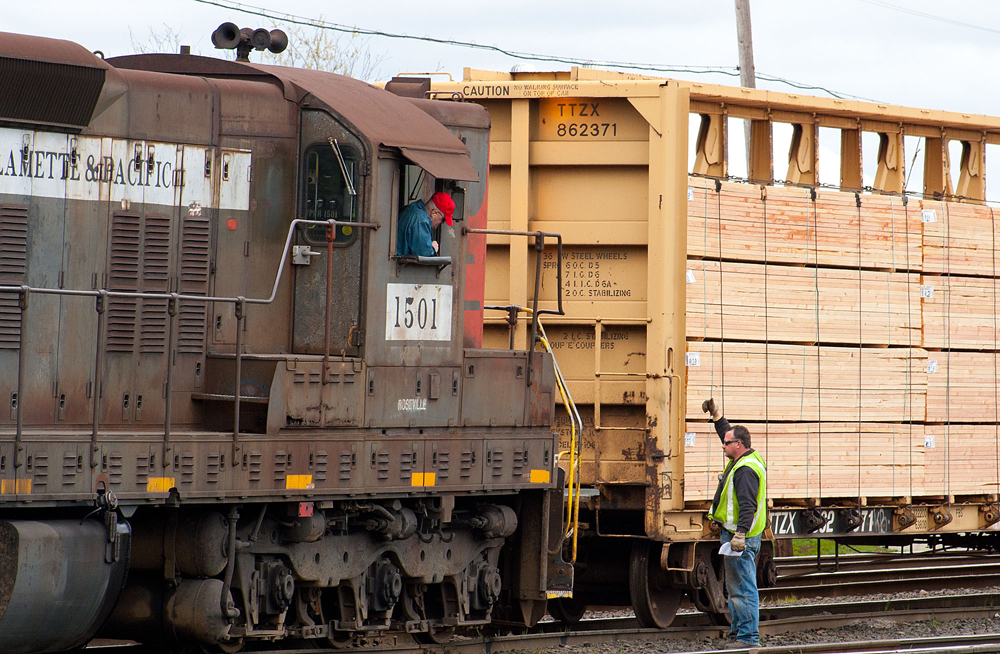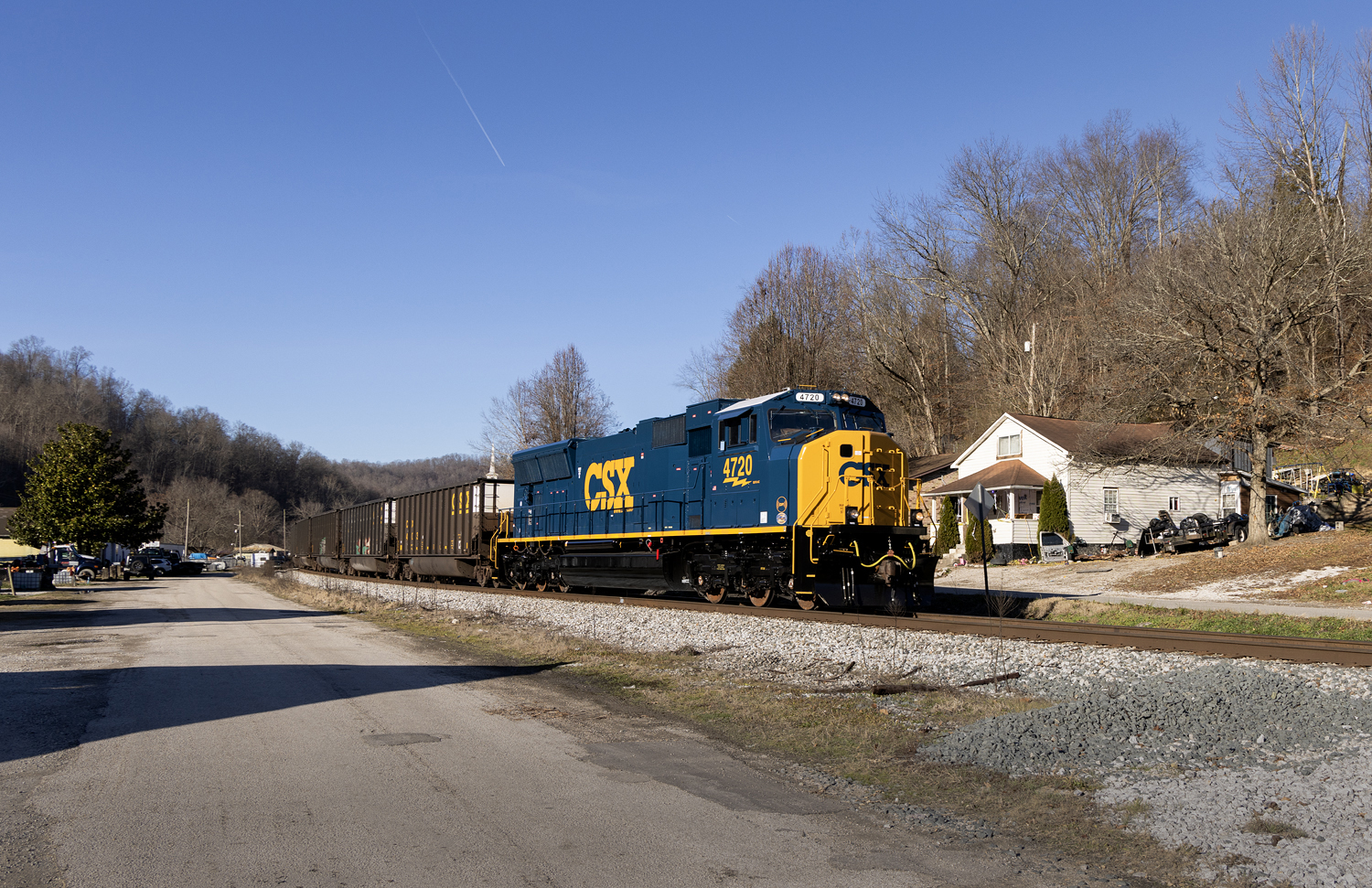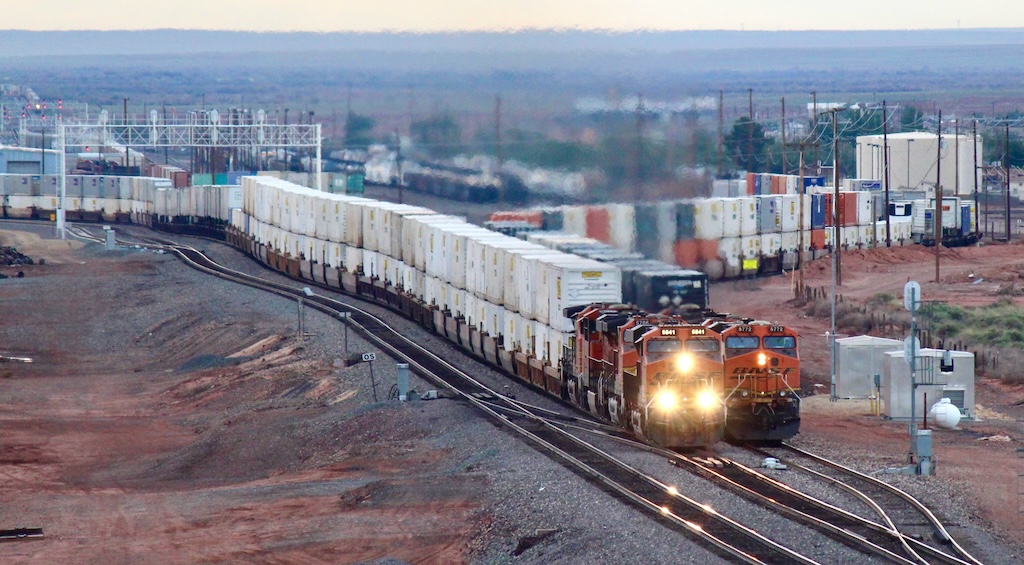
ELMA, Wash. — Shortline powerhouse Genesee & Wyoming has begun removing older locomotives from its roster as part of a consent decree reached with the Environmental Protection Agency earlier this year. Part of the agreement requires G&W to disable or upgrade more than 70 locomotives to address Clean Air Act violations [see “Genesee & Wyoming agrees to settlement …,” Trains News Wire, Jan. 25, 2023].
Several G&W railroads in the Pacific Northwest have locomotives on the list of locomotives to be eliminated, most of them classic first-generation EMD units. These include:
Portland & Western: P&W SD7 No. 1501; GP9 No. 1801; SD9s Nos. 1842, 1854.
Puget Sound & Pacific: P&W GP9 No. 1803
Cascade & Columbia: CSCD GP10s Nos. 1001, 1002.
Final disposition of these locomotives have yet to be determined; however, P&W No. 1803 has been non-operable for some time at Elma, Wash., and is slated for scrapping.
The EPA agreement requires G&W to either permanently remove the units from service by disabling their prime mover or replace their power plant with one that meets emission-standard requirements.














Any chance any of these “retiring” units could be preserved and go to a museum? (esp. the SD-7).
Of course the EPA ‘Consent Degree” requiring units to have their prime-movers “disabled” will mean the units wouldn’t operate again at a museum.
Nonetheless, it would be nice if the SD-7 (or one of the two SD-9s) could be preserved and repainted in their original SP paint-scheme ? (or BN/GN, if the SD-9s are ex-BN, which they might be ….)
The calculus geeks are on it. Dirty, fuel-guzzling two strokes are def frowned on.
The SD7 is a model of 6-axle diesel locomotive built by General Motors Electro-Motive Division between May 1951 and November 1953. It had an EMD 567B 16-cylinder engine producing 1500 horsepower for its six traction motors. United States railroads bought 188 units.
This was the first model in EMD’s SD (Special Duty) series of locomotives, a lengthened B-B GP7 with a C-C truck arrangement. The two extra axles and traction motors are useful in heavy, low-speed freight service. EMD continues to produce SD series locomotives to this day.
Some SD7s both high and short-hood can still be found in service today on shortline railroads and industrial operators, although most Class 1 roads stopped using these locomotives by the 1970s and 1980s.
Dr. Güntürk Üstün